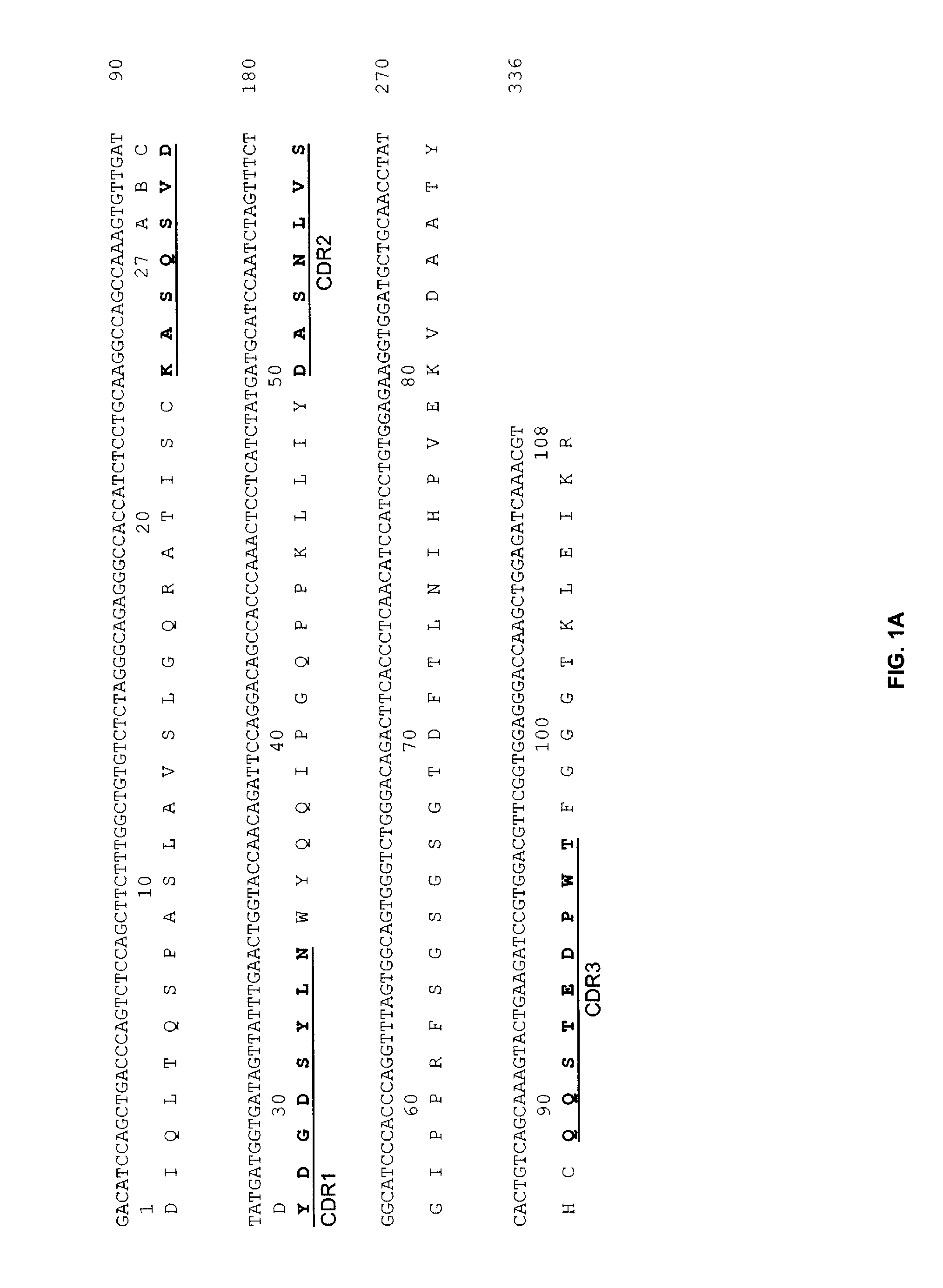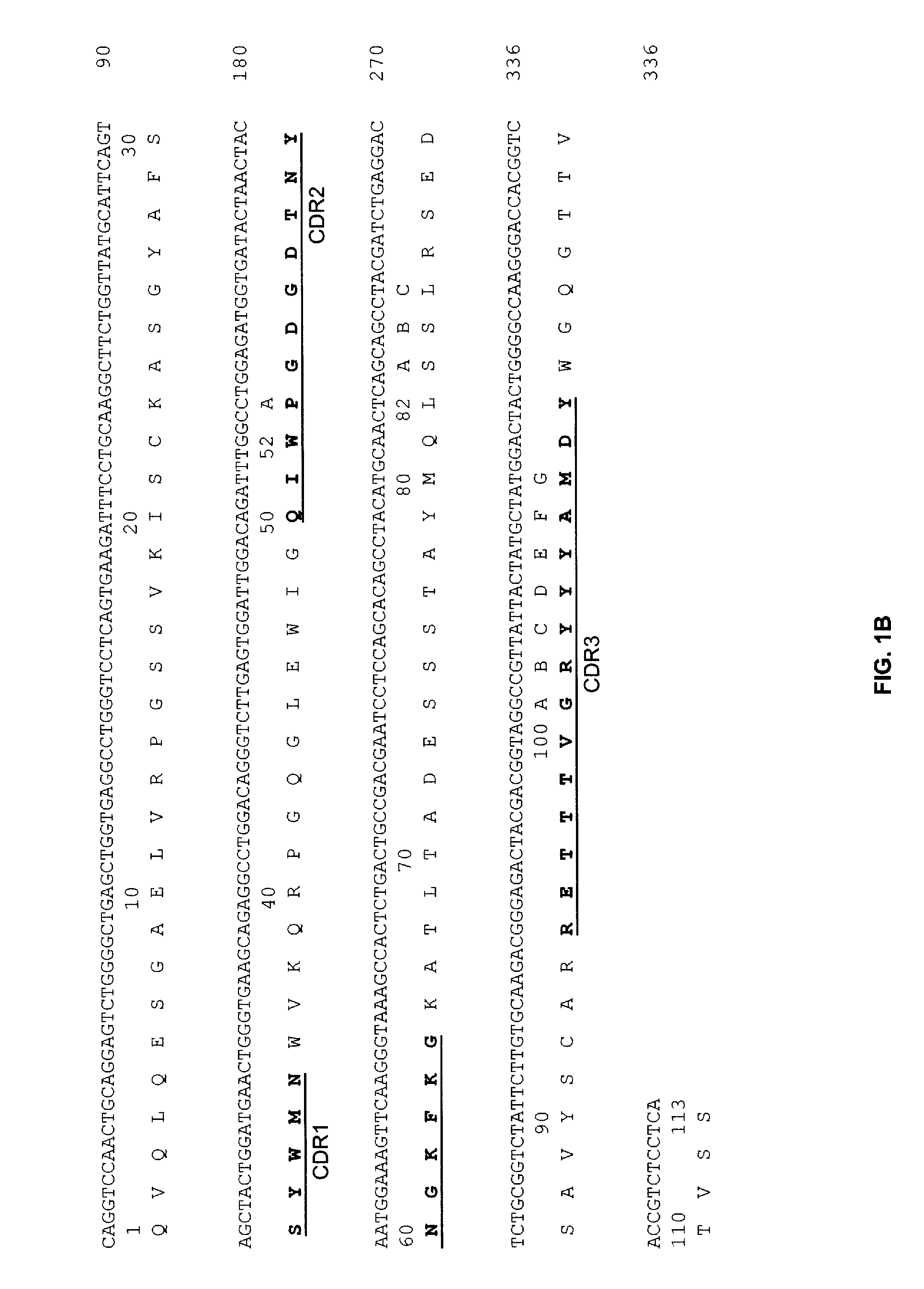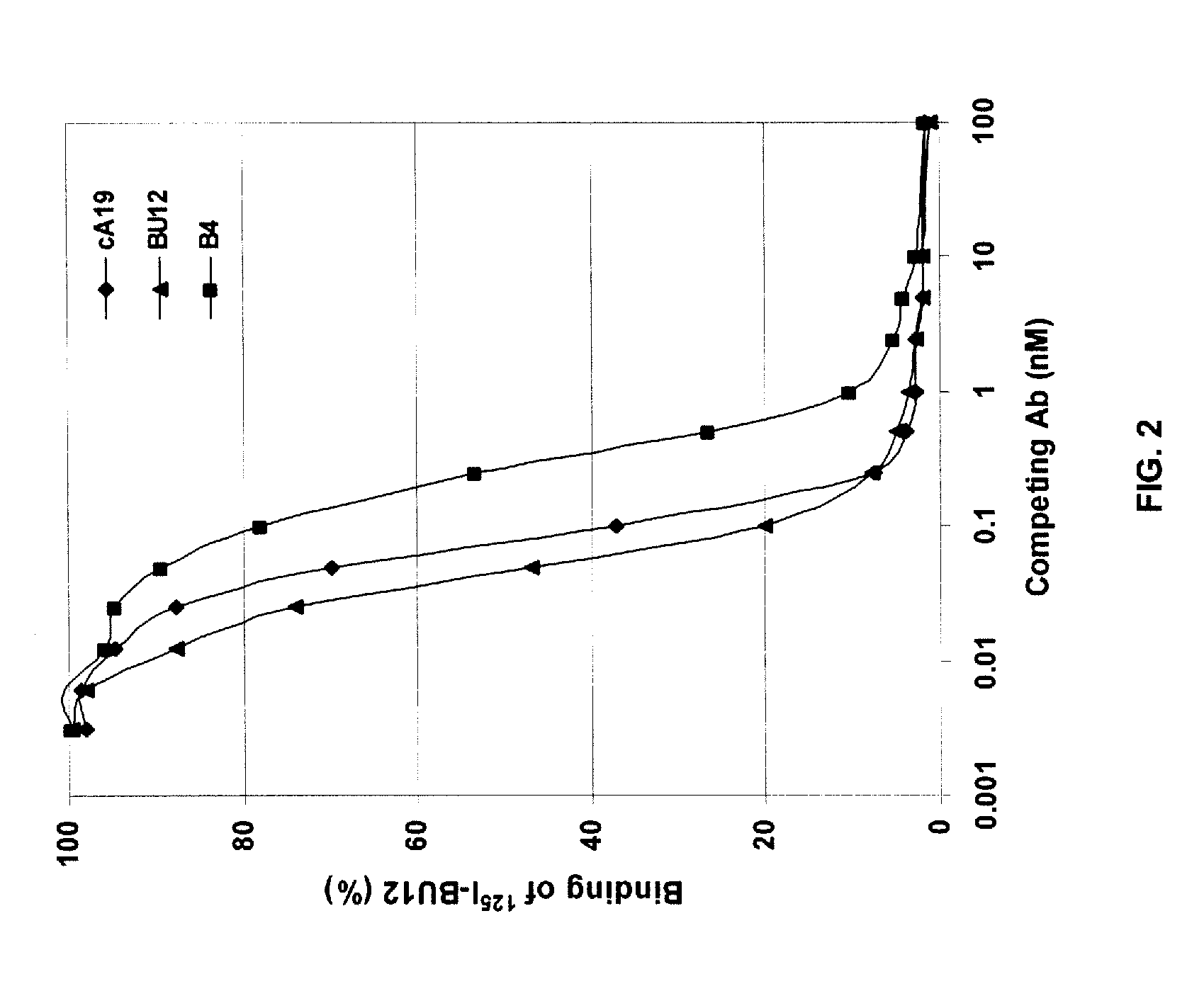Anti-CD19 Antibodies
a technology of anti-cd19 and anti-cd19, which is applied in the field of anti-cd19 antibodies, can solve the problems of increasing the symptoms of patients, reducing the doubling time of malignant b-cells, and affecting the treatment effect of patients
- Summary
- Abstract
- Description
- Claims
- Application Information
AI Technical Summary
Benefits of technology
Problems solved by technology
Method used
Image
Examples
example 1
Construction of a Humanized Anti-CD19 Antibody
[0166]A chimeric A19 (cA19) antibody was constructed and expressed in Sp2 / 0 cell. The Vk (SEQ ID NO:1 and SEQ ED NO:3) and VH (SEQ ID NO:3 and SEQ ID NO:4) sequences of cA19 are shown in FIG. 1. The cA19 antibody was shown to bind to CD19+ human lymphoma cell lines, such as Raji, Daudi, and Ramos. The Ag-binding specificity of purified cA19 was evaluated by a cell surface competitive binding assay against other anti-CD19 antibodies, e.g. B4 (Coulter) and BU12 (Chembiochem). Briefly, varying concentrations of cA19 were incubated with Raji cells in the presence of a constant amount of an I-125 radiolabeled anti-CD19 antibody for 1 h. After washing to remove the unbound antibodies, the cell surface-bound radiolabeled antibody was quantitated by counting the cell pellets in a gamma counter. As shown in FIG. 2, cA19 competed with BU12 (Chembiochem) for cell surface binding, indicating these antibodies share similar or overlapping epitopes of ...
example 2
Method of hA19 Antibody Construction
[0168]To engineer the CDR-grafted hA19VH and VK genes, a modified strategy as described by Leung et al. (1995) was used to construct the designed VK and VH genes for hA19 using a combination of long oligonucleotide syntheses and PCR. Briefly, two long synthetic oligonucleotides (ca. 130 mer in length) representing the 5′-(sense strand, designated as A) and 3′-half (anti-sense strand, designated as B) of a V sequence are used as the templates in a PCR reaction. The 3′-terminal sequences of the long oligonucleotides A and B are designed to overlap and be complementary to each other. PCR is initiated by annealing of the 3′-termini of A and B to form a short double strand DNA flanked by the rest of long oligonucleotides (single strand). Each annealed end serves as a primer for the replication of the single stranded DNA, resulting in elongation of A and B to form the double-strand DNA. In the presence of two short oligonucleotide primers, V gene segmen...
example 3
Transfection and Expression of hA19 Antibodies
[0172]Approximately 30 μg of the expression vectors for hA19 were linearized by digestion with SalI and transfected into Sp2 / 0-Ag14 cells by electroporation (450V and 25 J-μF). The transfected cells were plated into 96-well plates for 2 days and then selected for drug-resistance by adding MTX into the medium at a final concentration of 0.075 μM. MTX-resistant colonies emerged in the wells after 2-3 weeks. Supernatants from colonies surviving selection were screened for human MAb secretion by ELISA assay. Briefly, 100 μl supernatants were added into the wells of a microtiter plate precoated with GAH-IgG, F(ab′)2 fragment-specific Ab and incubated for 1 h at room temperature. Unbound proteins were removed by washing three times with wash buffer (PBS containing 0.05% polysorbate 20). HRP-conjugated GAH-IgG, Fc fragment-specific Ab was added to the wells. Following an incubation of 1 h, the plate was washed. The bound HRP-conjugated Ab was r...
PUM
| Property | Measurement | Unit |
|---|---|---|
| Therapeutic | aaaaa | aaaaa |
| Level | aaaaa | aaaaa |
| Cytotoxicity | aaaaa | aaaaa |
Abstract
Description
Claims
Application Information
 Login to View More
Login to View More - R&D
- Intellectual Property
- Life Sciences
- Materials
- Tech Scout
- Unparalleled Data Quality
- Higher Quality Content
- 60% Fewer Hallucinations
Browse by: Latest US Patents, China's latest patents, Technical Efficacy Thesaurus, Application Domain, Technology Topic, Popular Technical Reports.
© 2025 PatSnap. All rights reserved.Legal|Privacy policy|Modern Slavery Act Transparency Statement|Sitemap|About US| Contact US: help@patsnap.com



